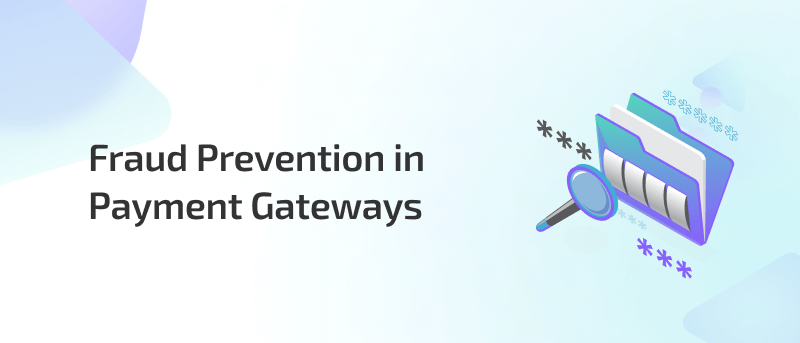.webp)
Published on
July 23, 2025
What is a Bank Secrecy Act (BSA) Officer? Key Duties Explained
In this story
%20Officer%20Role.png)
Accelerate AML Compliance: Meet Regulatory Demands with 80% Less Setup Time
.svg)
.svg)
Known by various titles such as BSA compliance officer, BSA/AML officer, or simply bank BSA officer, this position is crucial for ensuring that financial institutions comply with anti-money laundering (AML) regulations. While the BSA role originated in the United States under the Bank Secrecy Act of 1970, its principles and practices are now globally influential—including across financial institutions in the MENA region.
Understanding what a BSA officer is and what a BSA officer does is essential for AML professionals, fraud investigators, and compliance teams. Their duties involve managing complex risk frameworks, reporting suspicious transactions, and aligning the institution’s practices with evolving regulatory obligations.
6 Legal Obligations of a BSA Officer
What does a BSA officer do? Let’s explore the foundational legal structure that defines the BSA compliance officer’s responsibilities and how it aligns with both U.S. and international regulatory standards.
1. Manage Compliance Program: Oversee the bank’s daily BSA/AML compliance efforts, including policies, procedures, and systems.
2. Follow Board Direction: Carry out the board of directors’ instructions and ensure the BSA/AML program is properly implemented. While some tasks can be delegated, the bank BSA Officer remains responsible for the entire program.
3. Report to the Board and Management: Provide regular updates to the board and senior management about:
- The status of the BSA/AML program
- Any suspicious activity reports (SARs) filed
- Compliance risks and issues
4. Have Proper Authority and Independence: Be involved in decisions that affect BSA/AML compliance, without interference from other departments.
- Report directly to the board or a committee without conflicts of interest.
5. Access to Resources: Have enough staff, tools, and systems to manage the bank’s money laundering and other financial crime risks.
6. Be Qualified and Knowledgeable: Understand BSA rules and how they apply to the bank’s specific products, services, customers, and locations.;
Comply quickly with local/global regulations with 80% less setup time
.svg)
.svg)
BSA/AML Officer Roles in MENA Region
While the term “BSA Officer” originates from the U.S. Bank Secrecy Act of 1970, many financial institutions in the Middle East and North Africa (MENA) region have adopted the core BSA responsibilities and structure of this BSA role to align with global AML/CFT standards. These obligations are shaped primarily by:
1. FATF & MENAFATF Guidelines
The Financial Action Task Force (FATF) sets the global standard for AML/CFT compliance, including the requirement that financial institutions:
- Appoint a compliance officer at the management level
- Conduct institution-wide AML risk assessments
- Implement customer due diligence (CDD) and enhanced due diligence (EDD)
- Monitor and report suspicious transactions
2. National AML/CFT Regulations in MENA Countries
Each country within the MENA region has developed its own AML laws and supervisory frameworks that define the role and obligations of AML compliance officers.
In most jurisdictions, the equivalent of a BSA AML Officer is formally called a “Compliance Officer” or “MLRO”, with legally binding duties related to suspicious transaction reporting, recordkeeping, training, and program oversight.
3. Mandatory Responsibilities Defined by Regional Regulators
Regulators across the MENA region uniformly mandate that the compliance officer must:
- Be independent and report directly to senior management or the board
- Oversee implementation of AML/CFT policies and procedures
- Ensure timely filing of Suspicious Transaction Reports (STRs)
- Conduct internal training and awareness programs
- Coordinate with local Financial Intelligence Units (FIUs)
4. Cross-Border Compliance Considerations
MENA-based institutions with global operations (or correspondent banking relationships) are expected to:
- Implement AML programs that meet FATF standards
- Conduct sanctions screening aligned with OFAC, UN, and EU requirements
- Cooperate with international investigations and cross-border STRs
This means the BSA/AML Officer has to bridge local regulatory compliance with global enforcement expectations.
Key Takeaway:
The BSA Compliance Officer must lead, manage, and oversee the bank’s BSA/AML program with enough authority, independence, resources, and expertise, and keep the board informed to help the bank stay compliant with the law.
Who Can Be Appointed as a BSA/AML Officer?
A BSA/AML Officer should be a qualified person with the right knowledge, authority, and independence to manage the bank’s compliance with anti-money laundering laws.
1. Substantial AML Experience & Certifications: Depending on license category: 3–8+ years AML experience, plus professional certification like CAMS or CFE.
2. Independence & Board Reporting: Direct reporting line to Board or owners; full access to systems and internal data with no conflict of interest.
3. Knowledge and Expertise: The officer must understand BSA/AML rules, including how to detect and report suspicious activity.
4. Authority and Independence: The officer needs enough authority to enforce compliance and should report directly to senior management or the board to avoid conflicts of interest.
5. Adequate Resources: The officer should have access to staff, training, and systems needed to run the AML program effectively.
It is important to note that some institutions especially smaller ones, combine the MLRO role with that of the Head of Compliance. This is acceptable only if:
- The individual meets the experience and independence criteria
- There is no conflict of interest
- Adequate delegation and support structure is in place
Challenges and Best Practices for BSA Officers
BSA AML Officers face various challenges in managing compliance programs, but adopting best practices can help them effectively navigate risks and regulatory requirements.
Challenge 1: Keeping Up with Changing Regulations
Regulations around AML and CFT often change, making it hard to stay up to date, especially for institutions operating in different countries.
Best Practice: Set up a process to regularly monitor regulatory updates. Use trusted sources and maintain good communication with regulators. Update policies and train staff promptly when changes occur.
Challenge 2: Handling Large Volumes of Alerts and False Positives
Transaction monitoring systems generate many alerts, most of which may be false positives. This can overwhelm compliance teams.
Best Practice: Use advanced tools like AI to improve alert accuracy and reduce false positives. Regularly fine-tune monitoring systems. Prioritize alerts based on risk to focus investigations efficiently.
Challenge 3: Providing Effective AML Training
It can be difficult to train all employees properly, especially when teams have different roles and knowledge levels.
Best Practice: Create training tailored to each role. Use simple, clear materials and real examples. Keep training up to date and track completion.
Challenge 4: Balancing Compliance and Business Needs
AML rules can sometimes slow down business processes, causing tension between compliance and business teams.
Best Practice: Apply a risk-based approach to focus on the highest risks. Work closely with business teams when designing AML processes to ensure they are practical and efficient.
Challenge 5: Working with Multiple Departments and Regulators
Coordinating AML efforts across different teams and with regulators can be complex and cause delays.
Best Practice: Set up regular meetings or committees involving all key stakeholders. Use shared systems to communicate clearly. Keep management informed with regular reports.
Key Takeaway:
BSA Officers succeed by staying updated, using smart tools, delivering clear training, balancing risk and business needs, and working well with all stakeholders.
AML Software for BSA Officers in the MENA Region
AML software has become an essential tool for BSA Officers. Advanced solutions like the FOCAL platform help automate key compliance tasks, reduce manual errors, and improve overall program effectiveness.
FOCAL uses artificial intelligence to monitor customer activity and transactions in real time, allowing institutions to detect suspicious behavior quickly and accurately. It also streamlines customer due diligence by screening new and existing clients against international watchlists, sanctions databases, and politically exposed persons (PEPs), ensuring fast and reliable onboarding and risk assessment.
By improving accuracy and lowering false positives, FOCAL enables financial institutions to maintain strong regulatory compliance while reducing costs and supporting business growth. For BSA Officers in the MENA region, platforms like FOCAL offer a smart, scalable way to meet AML obligations in a fast-changing landscape.
FAQs
Q1. What is a BSA Officer in a Bank?
A BSA Officer or a Bank Secrecy Act Officer is responsible for making sure a financial institution follows anti-money laundering (AML) laws and regulations. This includes monitoring transactions, reporting suspicious activity, training staff, and keeping the institution’s AML program up to date.
Q2. What does BSA Officer stand for?
BSA Officer stands for Bank Secrecy Act Officer. The title comes from the Bank Secrecy Act of 1970 in the United States, which requires financial institutions to help detect and prevent financial crimes like money laundering.
Q3. How do you become a BSA Officer?
To become a BSA Officer, you usually start by working in compliance or AML-related roles at a financial institution. Over time, you build experience and gain knowledge of anti-money laundering laws, the Bank Secrecy Act, and regulatory requirements. Earning certifications like the Certified Anti-Money Laundering Specialist (CAMS) can help you qualify for the role.
Good communication skills, attention to detail, and the ability to analyze data are also important for success in this position. Understanding the BSA officer job description can help candidates prepare for the BSA responsibilities and skills needed in this position.
Streamline Compliance: Achieve 80% Faster Setup for Fraud Prevention
.svg)
.svg)

How Aseel reduced onboarding time by more than 87% using FOCAL
Learn how FOCAL empowered Aseel to achieve new milestones.
.svg)
.svg)
Mastering Fraud Prevention: A Comprehensive Guide for KSA and MENA Businesses
51% of organizations fell victim to fraud in the last two years, don't be caught off guard, act proactively.
.svg)
.svg)
Featured blog posts
.svg)
AI-Driven Precision in Fraud Risk and AML Compliance
.svg)
.svg)

.svg)
.png)






.webp)




.svg)

_FastestImplementation_Small-Business_GoLiveTime.png)

_HighPerformer_Small-Business_HighPerformer.png)
_Leader_Leader.png)



%20(1).webp)